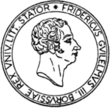John McLaughlin, who was born in 1898, only started to paint when he was over thirty. He studied Japanese and Chinese philosophy intensively, and stayed in Japan for several years in the 1930s. After returning to his native Boston, he set up a business trading in Japanese prints and drawings. During the Second World War he worked as translator in Japan, Burma and China. Around 1946 he settled in Dana, California, and returned to painting. McLaughlin now painted abstractly, using irregular shapes and forms and many colors. Around 1950 he „neutralized“ his repertoire of shapes and forms, painted geometric blocks, flat shapes and spaces in black, white and grey with occasional sprinklings of yellow and other colours. The surfaces of his paintings reveal no traces of the artist’s brush. In 1959 Jules Langsner organized an exhibition in the Los Angeles County Museum entitled „Four Abstract Classicists„, which showed works by John McLaughlin, Karl Benjamin, Frederick Hammersley and Lorser Feitelson. In London, where the exhibition was subsequently shown, the art critic Lawrence Alloway coined the expression „West Coast Hard Edge“ for McLaughlin’s art form, which formed a connection with such artists as Ellsworth Kelly and Kenneth Noland. Following his success with this exhibition, McLaughlin presented his works through the Felix Landau Gallery in Los Angeles and others in the USA, Switzerland and England. Between 1963 and 1996, his works were shown in personal exhibitions by the Pasadena Art Museum, the Corcoran Gallery of Art in Washington, and the Whitney Museum of American Art in New York, among others. His works radiate peace and seriousness, in fact they have a meditative character. McLaughlin himself said about his works: „My purpose is to achieve the totally abstract. I want to intensify the viewer’s natural desire for contemplation„. He died in 1976 aged 78.






